
MEASUREMENT TECHNIQUES
Scope & Guideline
Unveiling Innovative Solutions in Engineering Measurement
Introduction
Aims and Scopes
- Metrology and Measurement Standards:
The journal emphasizes the development and validation of metrology standards, including state primary standards and calibration techniques for various measurement units. - Innovative Measurement Technologies:
Research on cutting-edge technologies for measurements, such as optical, electromagnetic, and thermodynamic measurement systems, is a core area of focus, showcasing advancements in sensor technology and data acquisition methods. - Statistical Methods in Measurement:
The journal covers the application of statistical methods to enhance measurement accuracy, including error analysis, uncertainty estimation, and the development of robust algorithms for data processing. - Application of Artificial Intelligence and Machine Learning:
Recent papers explore the integration of AI and machine learning techniques in measurement systems to improve data analysis, pattern recognition, and predictive modeling. - Interdisciplinary Measurement Applications:
The journal publishes research that applies measurement techniques across diverse fields, including environmental monitoring, healthcare, and industrial applications, demonstrating the versatility of measurement science.
Trending and Emerging
- Integration of AI and Machine Learning:
There is a growing trend towards utilizing artificial intelligence and machine learning methodologies to enhance measurement accuracy and efficiency, particularly in data processing and predictive analytics. - Miniaturization and Smart Sensors:
Recent publications emphasize the development of miniaturized and smart sensor technologies, enabling more precise and versatile measurements in diverse applications, including environmental monitoring and biomedical fields. - Metrological Traceability:
An increasing focus on ensuring metrological traceability in measurement systems is evident, as researchers seek to establish standards that comply with international measurement frameworks. - Sustainable Measurement Practices:
Emerging themes include the development of measurement techniques that support sustainability and environmental monitoring, reflecting a societal shift towards eco-friendly practices. - Advanced Imaging and Holography Techniques:
Innovations in imaging and holography are gaining attention, with new methods for analyzing and reconstructing images leading to breakthroughs in measurement applications across various scientific disciplines.
Declining or Waning
- Traditional Calibration Techniques:
There is a noticeable decrease in papers focusing on conventional calibration methods, as researchers move towards automated and advanced calibration technologies that offer greater efficiency. - Basic Measurement Theory:
While foundational theories remain important, there has been a decline in publications purely dedicated to theoretical aspects of measurement, with more emphasis now placed on practical applications and technological advancements. - Single-Dimensional Measurement Techniques:
Research on one-dimensional measurement methods is becoming less common as multi-dimensional and integrated measurement systems gain traction, reflecting a trend towards comprehensive data capture. - Manual Measurement Processes:
The prevalence of studies detailing manual measurement processes is decreasing, as automation and digital measurement techniques become more widespread and preferred in research and industry. - Environmental Measurement in Controlled Settings:
Papers focusing on environmental measurements conducted in controlled laboratory settings are declining, with increasing interest in real-world applications and field measurements.
Similar Journals

Journal of Measurements in Engineering
Exploring the Frontiers of Measurement in EngineeringJournal of Measurements in Engineering is a pioneering open access journal dedicated to the crucial intersection of engineering and measurement technologies, published by JVE INT LTD in Lithuania. Since its transition to open access in 2018, the journal has significantly contributed to the field by providing a platform for disseminating innovative research findings and advances. With a focus on instrumentation, materials science, and mechanical engineering, it has established itself as a valuable resource for researchers, professionals, and students alike, offering insights that bridge theoretical concepts with practical applications. While currently holding a Q4 ranking in Instrumentation and Q3 ranks in both Materials Science (miscellaneous) and Mechanical Engineering, the journal encourages submissions that challenge existing paradigms and extend the boundaries of conventional measurements. As part of its commitment to fostering open scholarly communication, the journal accepts contributions reflecting a wide range of measurement methodologies and engineering applications up to the year 2024. By engaging with a global audience of practitioners and academics, the Journal of Measurements in Engineering underscores the vitality of precise measurement techniques in advancing engineering disciplines.
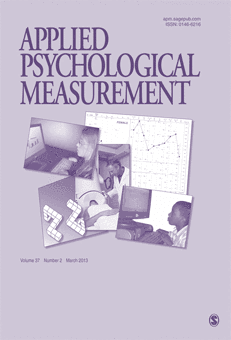
APPLIED PSYCHOLOGICAL MEASUREMENT
Exploring Innovative Methodologies in PsychologyApplied Psychological Measurement is a leading journal in the field of psychology and social sciences, published by SAGE Publications Inc. since its inception in 1977. With an impressive 2023 impact factor and consistently ranking in the Q1 quartile for both Psychology and Social Sciences categories, this journal plays a pivotal role in disseminating high-quality research that advances the understanding of psychological assessment and measurement methodologies. The journal embraces a diverse array of research contributions, ranging from empirical studies to theoretical discussions, covering critical topics that affect practitioners and researchers alike. With its comprehensive scope and rigorous peer-review process, Applied Psychological Measurement serves as an essential resource for researchers, professionals, and students aiming to deepen their knowledge and application of psychological measurement within various social contexts. The journal is based in the United States, ensuring a prominent platform for international discourse.
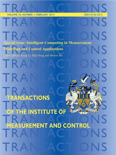
TRANSACTIONS OF THE INSTITUTE OF MEASUREMENT AND CONTROL
Elevating Standards in Measurement and Control ResearchTRANSACTIONS OF THE INSTITUTE OF MEASUREMENT AND CONTROL, published by SAGE Publications Ltd, is a prestigious journal that has been at the forefront of research in measurement and control since its inception in 1979. With its ISSN 0142-3312 and E-ISSN 1477-0369, this UK-based journal is indexed in reputable databases, showcasing its impact in the field, highlighted by a notable Q2 ranking in Instrumentation for 2023. The journal serves as a vital platform for scholars and practitioners alike, publishing high-quality, peer-reviewed articles that span a range of topics related to measurement technology and control systems. With an increasing focus on interdisciplinary approaches, TRANSACTIONS OF THE INSTITUTE OF MEASUREMENT AND CONTROL strives to advance the understanding and application of innovative measurement and control methodologies, making it an essential resource for academics, industry professionals, and students aiming to enhance their knowledge and expertise in this dynamic field. Although it operates under a traditional subscription model, the journal's commitment to disseminating cutting-edge research remains unwavering, inviting contributions that push the boundaries of instrumentation and control science.

JOURNAL OF ATMOSPHERIC AND OCEANIC TECHNOLOGY
Elevating Scholarship in Meteorology and OceanographyJOURNAL OF ATMOSPHERIC AND OCEANIC TECHNOLOGY, published by the American Meteorological Society, serves as a leading platform for disseminating innovative research in the fields of atmospheric and oceanic sciences. With an ISSN of 0739-0572 and an E-ISSN of 1520-0426, this esteemed journal encompasses a wide range of topics, from advanced observation techniques and operational meteorology to oceanographic technologies, making it indispensable for researchers and professionals alike. The journal's substantial impact is reflected in its ranking in Q2 for Atmospheric Science and Q1 for Ocean Engineering, promoting high-quality scholarship in these critical areas. Its Scopus rankings further affirm its relevance, being positioned in the 67th and 52nd percentiles in their respective categories. Though not open access, the journal’s rich archives cover vital research from 1985 to 2024, ensuring that its contributions remain accessible to the community. The Journal of Atmospheric and Oceanic Technology continues to be a cornerstone for those dedicated to advancing our understanding of weather, climate, and aquatic systems, encouraging innovative applications that address global challenges.
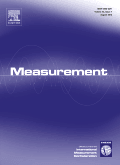
MEASUREMENT
Exploring the Intersection of Theory and Practice in MeasurementMEASUREMENT is a premier academic journal published by Elsevier Science Ltd, dedicated to advancing research in the fields of Applied Mathematics, Condensed Matter Physics, Electrical and Electronic Engineering, Statistics, and Instrumentation. With an impressive Q1 ranking in multiple categories as of 2023, MEASUREMENT stands out with its strong impact factor, indicative of its high-quality contributions to interdisciplinary research. Since its inception in 1983, the journal has maintained a commitment to publishing innovative methodologies, cutting-edge technologies, and significant advances in measurement science. Although currently not an Open Access publication, the journal provides vital access options through institutional subscriptions, ensuring that researchers, professionals, and students can delve into a wealth of knowledge throughout its pages, including both theoretical and practical applications. The journal’s rigorous peer-review process ensures that only the highest quality research is disseminated, making it an essential resource for anyone involved in quantitative analysis and measurement in diverse scientific domains.

PSYCHOMETRIKA
Pioneering rigorous methodologies for psychological measurement.PSYCHOMETRIKA, an esteemed journal published by Springer, serves as a premier platform for advancing the field of psychometrics and quantitative psychology. Since its inception in 1936, the journal has maintained its commitment to disseminating high-quality research, making significant contributions to both applied mathematics and psychology, reflected in its distinguished Q1 ranking in relevant categories as of 2023. With an impressive Scopus ranking, positioned at #117 in Applied Mathematics and #62 in General Psychology, it occupies a critical niche for scholars aiming to explore the interplay between statistical methods and psychological measurement. Although not open access, PSYCHOMETRIKA provides a rigorous peer-reviewed environment that fosters innovative research, methodologies, and theories while offering valuable insights relevant to researchers, professionals, and students alike. Prepared to bridge theoretical knowledge with practical application, this journal is a vital resource for those looking to deepen their understanding of psychometric principles and advance their scholarly endeavors in the behavioral sciences.
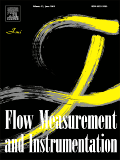
FLOW MEASUREMENT AND INSTRUMENTATION
Empowering Research in Measurement SciencesFLOW MEASUREMENT AND INSTRUMENTATION, published by Elsevier Science Ltd, serves as a vital resource for researchers and professionals in the fields of Instrumentation, Electrical and Electronic Engineering, Computer Science Applications, and Modeling and Simulation. With an impressive trajectory since its inception in 1989 and extending to 2024, this journal has gained a notable reputation, ranking in the upper quartiles of various categories within the 2023 Scopus metrics, reflecting its significant contribution to advancing knowledge in flow measurement technologies and methodologies. Although it does not offer Open Access options, the journal is well-regarded for its rigorous peer-review process, ensuring high-quality, impactful research dissemination. The journal's emphasis on empirical studies and innovative instrument design establishes it as an essential platform for disseminating cutting-edge findings that facilitate practical applications and inform future research directions. Positioned within the United Kingdom, it attracts a global readership dedicated to the continuous enhancement of measurement sciences and engineering innovations.
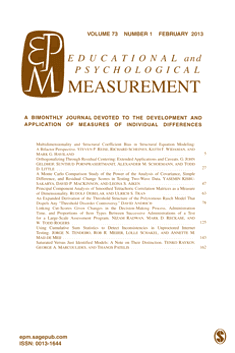
EDUCATIONAL AND PSYCHOLOGICAL MEASUREMENT
Exploring the Depths of Psychological EvaluationEDUCATIONAL AND PSYCHOLOGICAL MEASUREMENT, published by SAGE Publications Inc, is a premier journal serving as a vital resource for researchers and practitioners in the fields of educational and psychological assessment. With a rich history dating back to 1941, this esteemed journal encompasses a wide-ranging scope, exploring the intricacies of measurement techniques and their implications within applied mathematics, psychology, and education. Notably categorized in Q1 quartiles across various fields, including Applied Mathematics and Educational Psychology, the journal ranks impressively in Scopus, reflecting its high impact and relevance—ranked #82/635 in Applied Mathematics and #232/1543 in Education. The journal’s commitment to advancing knowledge in educational measurement equips scholars with essential insights and methodologies, making it an essential tool for advancing scholarly inquiry and practice. With no open access limitations, EDUCATIONAL AND PSYCHOLOGICAL MEASUREMENT is dedicated to disseminating quality research that influences educational practices and psychological evaluation, thus reinforcing its esteemed position within academia.
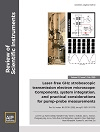
REVIEW OF SCIENTIFIC INSTRUMENTS
Fostering Excellence in Scientific Research and DevelopmentWelcome to the Review of Scientific Instruments, an esteemed journal published by AIP Publishing that has been a cornerstone in the field of scientific instrumentation since its inception in 1930. With an ISSN of 0034-6748 and E-ISSN of 1089-7623, this journal serves as a vital platform for the dissemination of innovative research and advancements in both Instrumentation and Medicine, categorized in Q3 quartiles in 2023. The journal has proudly maintained its relevance, forecasting continued publication through 2024, while providing critical insights that influence contemporary practices in various scientific domains. The impact factor reflects its contribution to the academic community, making it an invaluable resource for researchers and professionals seeking to stay at the forefront of scientific progress. Although Access is not open, the rigorous peer-review process ensures that published works are of the highest quality, making the Review of Scientific Instruments a must-read for anyone involved in the intricate world of experimental science and technological innovations.
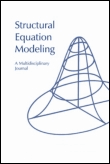
STRUCTURAL EQUATION MODELING-A MULTIDISCIPLINARY JOURNAL
Advancing Research with Innovative SEM ApplicationsSTRUCTURAL EQUATION MODELING-A MULTIDISCIPLINARY JOURNAL, published by ROUTLEDGE JOURNALS, TAYLOR & FRANCIS LTD, stands as a premier platform for the dissemination of innovative research and applications in structural equation modeling (SEM). With ISSN 1070-5511 and E-ISSN 1532-8007, this journal has maintained a robust impact in various academic realms since its inception in 1994. Renowned for its exceptional quality, it ranks in the Q1 category across four distinct disciplines, including Decision Sciences, Economics, Econometrics and Finance, Modeling and Simulation, and Sociology and Political Science. The journal's impressive Scopus rankings reflect its significant influence, particularly in Economics and Sociology, with percentile ranks placing it in the top tier of relevant fields. Researchers, professionals, and students alike will benefit from its comprehensive articles, which explore theoretical advancements and practical applications of SEM. In a landscape increasingly dependent on data-driven decision-making, the journal serves not only as a pivotal resource for current trends and methodologies but also as an essential guide for future explorations in multidimensional data analysis.